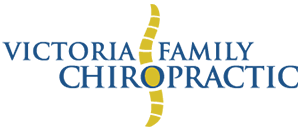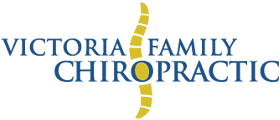Knee Injuries in Sport (Part 2)

Last week we talked about the symptoms and causes of the most common knee injuries and complaints. This week we’ll discuss ways to rehabilitate (rehab), and restore function to the largest joint in the body. Due to their limited blood supply, ligaments heal slowly when stretched. When they are completely torn, they can require surgery to re-attach and heal. When it comes to ligament damage, it simply takes time for healing to occur. In order to rehabilitate the knee joint, we have to look at the surrounding muscles and other joints which may be causing or exacerbating the pain and its underlying issue.
The Muscles
Joint-specific exercise is key to knee health and stability. These are the terms for the muscles which influence the knee joint:
The front of the thigh (quadriceps, or quads, because there are four individual muscles): rectus femoris, vastus medialis, vastus lateralis, and vastus intermedius. These extend or straighten the knee.
Behind the thigh (hamstrings) are made up of three muscles: biceps femoris, semitendinosus, and semimembranosus. These flex or bend the knee.
Other muscles providing stability include the gastrocnemius (calves), which are located behind and just below the knee, the tensor fascia lata (TFL), which is close to the hip, the sartorius and the gracilis, which are in the inner thigh, and the popliteus, which is a small muscle behind the knee responsible for rotation.
The Feet
The feet play a larger role in knee health than many people may be aware of. Foot mechanics can greatly influence knee, hip, and spinal health. Make sure you have supportive footwear that is applicable for your foot and which not worn out. When I see runners with knee pain I always ask about their footwear: how old their shoes are, have they been experiencing pain since getting new shoes, etc. A specific insole or custom orthotic can be of great benefit for people with knee problems. Consult with an expert such as a podiatrist or chiropractor to find out if this could work for you.
The Pelvis
Because I am a chiropractor, I look at the body as a whole. I am aware that sometimes the cause of the problem comes from a different place. The pelvis is the foundation of the body and many of the muscles and virtually all the nerves influencing them come from this area. It is common for people to have pelvic misalignments that prevent optimal motion, leading to a variety of knee problems. Chiropractors are the best at dealing with these issues, but you can work with specialized physiotherapists as well.
Forms of Rehabilitation
Before performing any exercise be sure to consult with an individual certified in exercise because some of these exercises may require supervision. Remember to use light weights and low repetitions to minimize post-exercise soreness and ensure safety. These are three terrific exercises that address each of these muscle groups and will improve knee strength, flexibility, and stability, promote healing, and help relieve pain.
- Lunges: These are very effective for strengthening the quads, hamstrings, and calves. Lunges can be done in a walking style or from a standstill either forward or backward. To perform, take a medium to large step forward or backward and try to get a 90-degree bend in the forward leg and return to starting position. Try beginning with one set of five repetitions. As strength and endurance improve, perform up to three sets of 12 repetitions. Tip: keep you knee tracking straight ahead, avoiding allowing your knee to bend inwards or outwards.
- Bicycle: This is another great exercise that strengthens knee muscles – in particular the quads and hamstrings. It’s applicable for most people as it can range from low to high intensity. It is also very accessible as you can use a traditional or exercise bike in standard or reclining style.
- Hip Adduction: This is when the leg comes towards the midline, such as when an ice skater brings the leg back inwards from the extended leg stride. Skating is one example but not very applicable for most. Another easier way is to attach an exercise band around your ankle and to a stable structure such as an exercise machine. Adjust your stance so there is appropriate resistance when you pull you leg back to midline from a lateral position
- Other Forms of Therapy: I personally had a good experience with acupuncture and many of my patients have as well. Other therapies to consider are different forms of stimulation such as laser, Transcutaneous Electrical Nerve Stimulation (TENS), ultrasound, magnetic therapies, massage, physiotherapy, and more.
- Always remember RICE: This classic acronym stands for Rest, Ice, Compression, and Elevation. Rest is an important part of healing, but rest does not always mean staying completely still. In fact, for most cases you want to keep moving so that joints, muscles, and ligaments don’t erode. Ice is great at reducing pain and inflammation shortly following trauma or surgery. I don’t generally recommend icing after one week as it may actually slow healing, but within the first week of injury or surgery, apply ice or a cold pack for 10-15 minutes several times a day. Always at least an hour apart for maximum effectiveness.
Elevation and compression may be needed to reduce swelling in some situations.
All the best!
Cale
OFFICE HOURS
Monday
7:30am - 1:00pm
Tuesday
1:00pm - 7:00pm
Wednesday
7:30am - 1:00pm
Thursday
1:00pm - 7:00pm
Friday
7:30am - 1:00pm
Saturday & Sunday
Closed
Victoria Family Chiropractic
3200 Shelbourne St Suite 203
Victoria, BC V8P 5G8




